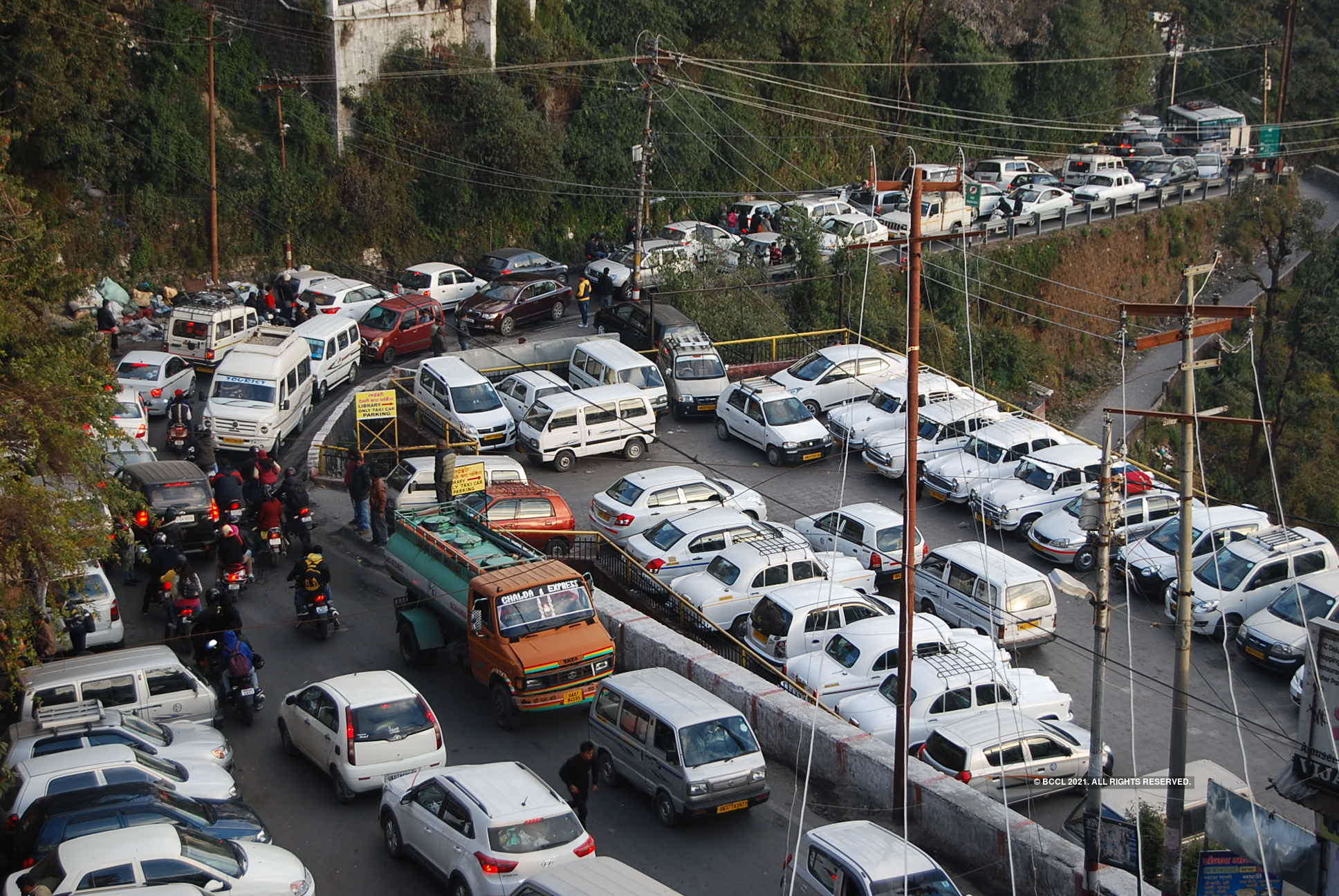
Those touring Himachal are accustomed to frequent traffic jams on narrow serpentine roads turning journey into a nightmare. However, the World Bank funded $82 million project for roads transformation is likely to become a game changer.
About 5,000 tourist vehicles enter the capital of the hill state Shimla every day and the situation in Manali and Dharamsala is no better. During peak season the situation becomes all the more difficult on roads. The transportation of apples and other fruit crops to markets outside Himachal Pradesh is also a major problem because of lack of infrastructure and problems allegedly created by monopoly transport unions. There are about 1.25 lakh vehicles registered in Shimla itself. According to the Department for Promotion of Industry and Internal Trade (DPIIT), the cumulative FDI inflows in Himachal Pradesh were valued at US$ 22.83 million between October 2019 and March 2021. However, lack of adequate infrastructure and roads network often become a bottleneck for investors to pump in funds in the hill state.
The government has come out with an Expression of Interest (EoI) for Consultancy Services “Consultancy Services for Replacement/upgradation of Existing Web based Road Management System (RMS) application with RAMS along with data collection and engineering services” (RAMS). This is part of the $82 M project signed by the Government of India, the Government of Himachal Pradesh and the World Bank for the implementation of Himachal Pradesh State Roads Transformation Project. The project aims to strengthen transport and road safety institutions of Himachal Pradesh by improving the condition, safety, resilience and engineering standards of the state road network.
The Himachal Pradesh State Roads Transformation Project will finance initiatives to build climate and disaster resilient roads; improve road safety along tourism corridors in Himachal; enhance logistics along fruit belts; and support the government’s initiative to create a corporate entity responsible for ensuring well-performing roads. A third of the maintenance contracts under the project will be awarded to women-led Self-Help Groups (SHGs).
In 2020, 788 persons had died and the state had witnessed 2,014 accidents in 2020 in which 2,855 persons had been injured during the year. In 2018, around 1.2 thousand people lost their lives in road accidents across the Indian state of Himachal Pradesh. Traffic discrepancies have been a major source of death, injury and damage to property every year. In 2018, over-speeding of vehicles was the main reason for road accident casualties. In 2021, the monsoon death toll in Himachal Pradesh climbed to 432 which is considered as the highest in the last five years while twelve people have died in the last 24 hours, according to the Disaster Management Authority. Widespread rains and snowfall at high altitude passes resulting in a series of landslides, disruption of major roads and National Highways often throw life completely out of gear in Himachal Pradesh. This creates havoc for the travellers which also result in several road accidents including some fatal.
The economic growth of any region is closely linked to its road infrastructure. The mountainous state of Himachal Pradesh with its rich horticulture and tourism potential requires well-constructed, well connected, climate resilient and safe roads. This project will help the state develop reliable, resilient and safe roads which are crucial for the economic development of the state.
The $82 million loan agreement for the project was signed by Sameer Kumar Khare, Additional Secretary, Department of Economic Affairs, Ministry of Finance on behalf of the Government of India and Junaid Kamal Ahmad, Country Director (India) on behalf of the World Bank. Whereas, the project agreement was signed by Jagdish Chander Sharma, Principal Secretary, Public Works Department on behalf of the Government of Himachal Pradesh and Ahmad.
Himachal Pradesh has the potential to produce high-value horticultural products. However, to leapfrog to the next level of competitiveness in the global value chain, the state needs to focus on improving its roads and logistics services. This project will support the Government of Himachal Pradesh to provide greater opportunity to smallholder farmers to access domestic and international agricultural markets, attract private investments to enhance value chains and increase jobs and farmers’ incomes.
Himachal Pradesh, a mountain state richly endowed with natural resources, often faces landslides and flash floods that affect its road connectivity. Cloud bursts, more extreme river flows and flooding cause landslides and erosion of embankments and loss of roads or bridges. These events are projected to increase over the next few decades as a result of climate change. To protect against landslides and floods, the project will implement engineering solutions that are plant and natural-based as well as control vehicular emission to address climate risks.
Furthermore, as there is no early warning system in the state, landslides cause fatal accidents. During the snow and rainy season, transportation of agricultural products and tourists is either terminated or delivered at a high cost. Measures such as creating an emergency response crew, upgrading drainage structures and protecting slide prone areas will help build resilient road infrastructure.
According to Tesfamichael Mitiku, Senior Transport Engineer and World Bank’s Task Team Leader for the project, a well-performing road infrastructure that helps in creating an efficient logistics system will go a long way in supporting smallholder farmers, small and medium enterprises and manufacturing industries deliver products just-in-time to wholesale and terminal markets at a lower cost. Reorganizing Himachal Pradesh Road and Other Infrastructure Development Corporation (HPRIDC) and HP Motor Vehicle Administration as corporate entities, will also support greater transparency and accountability in promoting innovative development solutions.
Recognizing that road safety is a critical issue, the project will enhance the state’s ability to systematically identify, analyze, develop and prioritize critical road safety measures that will benefit all road users. The ‘Safe Systems’ approach will be adopted in selected districts and heavily trafficked corridors. The state highway patrol will be trained and equipped with surveillance gear. An emergency response system will be established to help connect accident sites with dedicated hospitals for post-crash care and data collection.
The $82 million loan from the International Bank for Reconstruction and Development (IBRD) has a final maturity of 15 years including a grace period of five years. In addition, under the State Budget 2021-22, the government had proposed an outlay of Rs. 4,046 crore (US$ 551.87 million) to construct roads and bridges. The four agro-climatic conditions in the state support cultivation of multiple crops, vegetables and fruits around the year. In April 2021, National Highways Authority of India (NHAI) awarded a contract to IRB Infrastructure Developers Ltd. (IRB) worth Rs. 828 crore (US$ 113.40 million) to upgrade and rehabilitate a four lane outline to strengthen the Punjab and Himachal Pradesh border.












